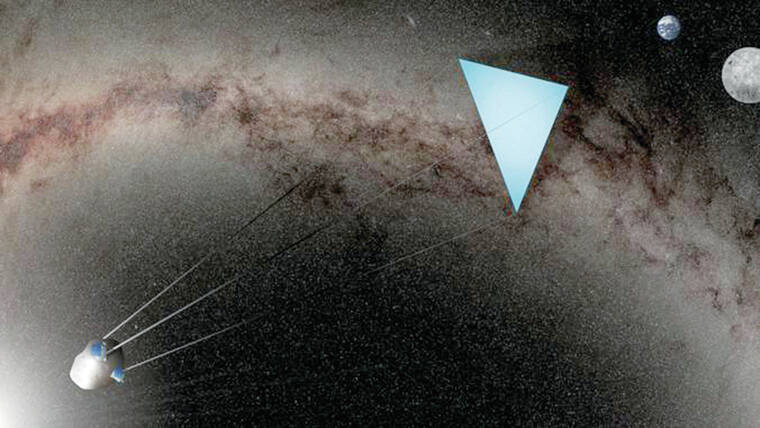LIHU‘E — Sometimes the simplest ideas are the most effective.
As United Nations officials warn that “the era of global boiling has arrived” after noting July 2023 will likely be the hottest month ever recorded, one University of Hawai‘i (UH) at Manoa astronomer has suggested a concept for mitigation straight out of a science fiction novel — blotting out part of the sun’s rays by sending a “sun umbrella” into the atmosphere.
“In Hawai‘i, many use an umbrella to block the sunlight as they walk about during the day,” said Istvan Szapudi, author of the report and cosmologist at the UH Institute for Astronomy. “I was thinking, could we do the same for Earth, and thereby mitigate the impending catastrophe of climate change?”
The concept, known as a solar shield, has been previously proposed by other scientists, although none have yet stuck.
“The idea behind it is simple,” said Roy Gal, associate astronomer at the UH Institute for Astronomy. “Just like on a hot day, if you use a parasol or an umbrella, you don’t feel as hot — if you can reduce the amount of sunlight hitting the Earth, than you don’t get as much heating.”
Current estimates suggest approximately 1.7 percent of Earth’s solar radiation would need to be blocked in order to prevent a catastrophic rise in global temperatures.
While the idea appears simple, several logistical issues have gotten in the way of implementation.
One of the most significant complications is ensuring the shield would stay in place, as solar radiation pressure could blow the entire structure away.
“If you were to put up this big umbrella, then like on a breezy day, it would get moved by the sun out of its position unless it’s heavy enough for the gravity between the sun, the Earth and the shield can keep it in position,” Gal said.
Increasing the solar shield’s weight only creates new problems, though. In order to keep the structure in position, it would have to weigh millions of tons, far heavier than could be feasibly launched from Earth.
To get around this, Szapudi devised a clever solution that greatly shrinks how much cargo needs to be launched.
“His idea is that instead of making the shield incredibly heavy, if we can capture an asteroid and tether it to a lighter-weight shield, then the asteroid provides the weight while the lighter-weight shield provides the shade,” Gal explained.
According to the report, using an asteroid as a counterweight could reduce the required launch cargo from about 3.5 million tons to about 35,000 tons — a 99 percent reduction in weight. Additionally, newer, lighter materials have the potential to reduce the shield’s mass even further.
Still, today’s largest rockets can only lift about 50 tons to low earth orbit, meaning hundreds of launches would likely be required before assembling the shield in orbit. But with companies like SpaceX launching into space every few days, Szapudi’s approach transforms the concept of a solar shield from preposterous to possible.
“In the past, when people have proposed this sun shield idea, the amount of mass needed was 100 times more, which was completely science fiction,” Gal said. “And now, it’s within the realm of possibility that this idea becomes technologically feasible.”
•••
Jackson Healy, reporter, can be reached at 808-647-4966 or jhealy@thegardenisland.com.


